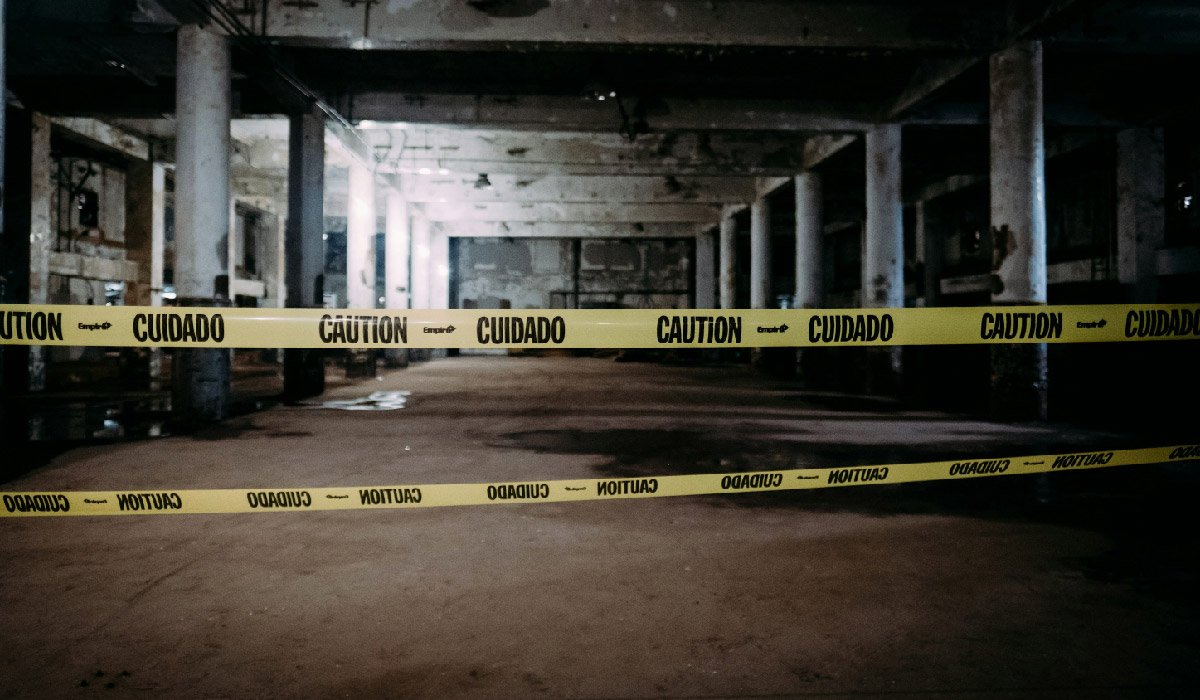Blog
Asbestlint Warning: The Silent Threat Inside Old Buildings

Introduction
You may not see it—but asbestlint could be silently endangering your health. Hidden in attics, basements, or ductwork of older homes and factories, this microscopic hazard is often overlooked. Unlike visible asbestos panels or insulation, asbestlint drifts freely like regular dust, making it more likely to be inhaled or spread through air systems. As asbestos-related illnesses continue to surface decades after exposure, understanding asbestlint is critical for anyone working in construction, renovation, or facilities management.
This article covers everything you need to know—what asbestlint is, where it’s found, the diseases it can cause, how to identify and safely remove it, and how to prevent exposure. Simple language, real-world advice, and scientific accuracy make this a must-read guide for anyone serious about safety.
What Is Asbestlint?
Asbestlint is a fine, dust-like substance made up of microscopic asbestos fibers, typically found in older buildings, industrial plants, and demolition sites. Often mistaken for common household lint or dust, asbestlint poses a serious health threat due to its airborne nature and the long-term damage it can cause when inhaled. Because of its invisible yet toxic presence, it has become a growing concern in discussions around environmental safety, occupational hygiene, and building maintenance.
A Clear Definition of Asbestlint
Breaking Down the Word: “Asbestos” + “Lint”
The term asbestlint is a hybrid word—blending “asbestos” with “lint.” While not yet officially defined in regulatory texts, it’s quickly gaining popularity in occupational health circles. The reason? It captures the hidden, fine nature of asbestos dust that often accumulates in unseen areas like ceiling voids, ventilation ducts, or worn-down insulation. Asbestlint refers specifically to the airborne, lint-sized fibers that originate from deteriorating asbestos-containing materials (ACMs). These fibers are light, easy to disturb, and incredibly dangerous when inhaled.
How Asbestlint Differs from Bulk Asbestos
Bulk asbestos refers to the solid, visible materials—panels, tiles, pipe wraps—that contain asbestos. Asbestlint, by contrast, is microscopic, almost weightless, and often floats freely in the air or settles on surfaces like furniture, flooring, or clothing. It forms when these bulk materials break down due to age, vibrations, humidity, or mechanical disturbance. This makes it particularly hazardous, as people can unknowingly inhale it or carry it home from a job site on their garments. The fiber size and airborne potential give asbestlint a more insidious role in long-term exposure.
Where Is Asbestlint Found?
Residential Environments
Many homes built before the 1980s contain asbestos in insulation, roofing shingles, or flooring tiles. As these materials degrade, they release asbestlint into attics, behind walls, and around old piping. Even minor home repairs—like drilling a hole or removing an old carpet—can disturb these fibers, sending them into the living space without any warning. Most homeowners wouldn’t recognize it because it looks exactly like harmless household dust.
Industrial and Commercial Buildings
Factories, warehouses, and commercial buildings constructed before asbestos regulations were enforced are high-risk zones. Boiler rooms, machine shops, and ceiling ducts often harbor loose fibers that form asbestlint. In places like power plants, refineries, and shipyards, asbestos was used for fireproofing and insulation—materials which now, decades later, are often brittle and fiber-shedding. Without proper containment, these environments become highly toxic over time.
Construction and Demolition Sites
The most dangerous environments for asbestlint exposure are demolition or renovation sites. Any disturbance of ACMs—cutting, grinding, removing ceiling panels—can send clouds of asbestlint into the air. Workers in such environments are often the most exposed, especially if proper protective protocols are not followed. The fine nature of asbestlint means it easily escapes visual detection and can travel through entire buildings via air vents.
Health Risks of Asbestlint Exposure
Why Inhaled Fibers Are So Dangerous
When asbestlint is inhaled, the fibers bypass the nose and throat, settling deep in the lungs. Unlike dust or pollen, these fibers do not dissolve or get expelled. Instead, they lodge in lung tissue where they can cause inflammation, scarring, and genetic damage over time. This makes asbestlint one of the most dangerous forms of asbestos exposure, especially because its airborne nature makes long-term inhalation highly likely in contaminated environments.
Diseases Caused by Exposure
Long-term exposure to asbestlint has been conclusively linked to a variety of deadly diseases. The most well-known is mesothelioma, a rare and aggressive cancer affecting the lining of the lungs, heart, or abdomen. Asbestosis, a non-cancerous but chronic lung disease, causes tissue scarring and shortness of breath. Lung cancer is another risk, especially in people who smoke. Pleural thickening, which leads to breathing issues and chest pain, can also develop from repeated exposure. The tragic aspect is that these illnesses often manifest decades after exposure, making early detection difficult and legal responsibility complex.
Who’s Most at Risk of Exposure?
People working in environments where asbestos was historically used are most at risk. This includes construction workers, especially those doing demolition or renovation. Janitors and maintenance staff who clean old basements or service HVAC systems may unknowingly stir up settled asbestlint. HVAC technicians, electricians, and plumbers operating behind old walls or ceilings often encounter undisturbed ACMs. Even residents and tenants living in old buildings may be exposed if asbestos insulation deteriorates or is disrupted during minor repairs. The risk also extends to family members if workers bring contaminated dust home on their clothes.
How to Identify Potential Asbestlint
Visual Cues and Suspicious Conditions
While you can’t “see” asbestlint definitively without lab testing, certain conditions suggest its presence. Unusual dust accumulation, crumbly insulation, discolored ceiling panels, or flakes around old pipes can all signal a problem. If your building was constructed before 1980 and hasn’t undergone asbestos remediation, there’s a high likelihood of contamination.
Why You Can’t Trust Your Eyes
One of the scariest things about asbestlint is that it looks like regular dust. It might settle on bookshelves, duct grates, or the tops of ceiling tiles, blending in with normal household lint. However, the danger lies in what you can’t see. Even one disturbed tile or cracked pipe wrap can release thousands of invisible fibers into the air.
Importance of Professional Testing
If you suspect asbestlint in your home or workplace, don’t take chances. Contact a certified asbestos inspector who can perform air sampling, surface swabs, or material testing using powerful microscopes like PLM (Polarized Light Microscopy) or TEM (Transmission Electron Microscopy). Never attempt to test or disturb materials yourself—it could make the problem worse.
What To Do If Asbestlint Is Found
Don’t Disturb It
If you find suspicious material or excessive dust in an older building, avoid vacuuming, sweeping, or even walking through the area. Asbestlint becomes airborne very easily. The more it’s disturbed, the more it spreads, so the first step is always containment.
Call Certified Abatement Professionals
Licensed asbestos abatement professionals will come equipped with respirators, disposable suits, and sealed containment tools. They use HEPA vacuums and wet-wiping techniques to safely remove contaminated materials without releasing fibers. Always hire a team with certifications and insurance, as improper handling can put lives at risk.
Inform Occupants and Seal Off the Area
Turn off HVAC systems, close off air returns, and post clear warning signs around the area. Alert everyone who may come into contact with the space, including neighbors in shared buildings. This isn’t just a safety step—it’s also a legal one in many regions.
Safe Removal and Management of Asbestlint
Survey and Containment
Before removal, experts conduct a comprehensive asbestos survey, identifying contaminated areas and risk levels. They set up sealed containment zones with negative air pressure systems to prevent fibers from escaping into other rooms.
Use of PPE and HEPA Systems
Everyone working inside the zone wears PPE, including respirators, gloves, goggles, and protective suits. Special HEPA vacuums and air scrubbers are used to collect airborne fibers and clean surfaces safely.
Disposal Procedures
Collected asbestlint is sealed in double-layered, labeled bags, then transported to licensed asbestos disposal facilities. Improper disposal is illegal and dangerous, so always verify the credentials of disposal teams.
Prevention: How to Stop Asbestlint Exposure Before It Starts
The best way to stay safe is through proactive prevention. Schedule annual inspections for older buildings and provide asbestos awareness training for staff. If asbestos materials are present but stable, consider encapsulation (sealing them) rather than removal. Install HEPA-filtered air systems to trap airborne particles, and never begin DIY renovations without professional clearance. Prevention is far cheaper—and safer—than dealing with a contamination event.
Legal and Regulatory Oversight
Global Bans and Restrictions
Many countries, including the United States, United Kingdom, Canada, and the European Union, have placed strict bans or limitations on asbestos use. However, some developing nations still permit certain types. The U.S. EPA, OSHA, and state-level agencies govern how asbestos is handled.
Employer Responsibility
Under OSHA regulations, employers must protect workers from asbestos exposure, including from asbestlint. That means conducting hazard assessments, providing training, and ensuring protective equipment is used.
Fines and Legal Cases
Companies that neglect asbestos safety have faced multi-million-dollar lawsuits from exposed workers. Victims of diseases like mesothelioma have successfully sued employers who failed to follow proper asbestos handling protocols.
Innovations and Alternatives to Asbestlint
To replace asbestos safely, industries now rely on alternatives like fiberglass, mineral wool, ceramic fiber, and basalt tape. These materials offer similar insulation and fireproofing benefits without health risks. Some companies now use smart sensors to detect airborne fibers or color-change sprays that react to fiber presence—enhancing early detection and intervention.
Environmental Impact of Improper Asbestos Handling
Asbestlint doesn’t just harm people—it can pollute soil, water, and wildlife. Improper disposal may lead to contaminated dump sites, and fiber runoff during rain can enter storm drains. Because asbestos fibers are virtually indestructible, they pose a long-term ecological hazard. That’s why environmentally responsible management is just as important as personal protection.
Final Thoughts
Asbestlint might seem like a fringe topic, but its dangers are real and widespread. The tiny fibers it carries can cause lifelong health damage, not just for workers, but also for families and entire communities. The good news? Exposure is entirely preventable with awareness, professional inspection, and smart management. Whether you’re a homeowner, landlord, contractor, or business owner, understanding asbestlint today can protect lives tomorrow. Don’t wait until it’s too late—act, inspect, and educate now.
FAQs
Q1: What is Asbestlint?
Asbestlint is a fine, dust-like material made of tiny asbestos fibers that break away from old insulation, tiles, or building materials. It looks like ordinary lint or dust but is dangerous because the fibers can float in the air and be inhaled, causing serious lung diseases over time.
Q2: Where is Asbestlint commonly found?
Asbestlint is most often found in older homes, factories, shipyards, and construction sites built before the 1980s. It collects in places like attics, basements, pipe insulation, and air ducts where asbestos-containing materials have started to break down.
Q3: Why is Asbestlint dangerous?
Asbestlint is dangerous because it releases invisible asbestos fibers into the air. When breathed in, these fibers can stick to lung tissue and cause diseases such as asbestosis, lung cancer, and mesothelioma. Even small, repeated exposure can lead to serious health risks.
Q4: How can I tell if Asbestlint is in my home or workplace?
A: Asbestlint looks like normal dust, so it’s very hard to identify by sight. The safest way is to hire a licensed asbestos inspector to test the air and surfaces. They use special microscopes to check for asbestos fibers and confirm if the material is dangerous.
Q5: What should I do if I find Asbestlint?
Do not try to clean it yourself. Avoid sweeping or vacuuming the area because this can spread the fibers. Instead, seal off the space, turn off any ventilation, and contact a certified asbestos removal professional to safely manage and dispose of it.
For More Information, Visit Coopermagazine
-

 Celebrity1 year ago
Celebrity1 year agoWho Is Jennifer Rauchet?: All You Need To Know About Pete Hegseth’s Wife
-

 Celebrity1 year ago
Celebrity1 year agoWho Is Mindy Jennings?: All You Need To Know About Ken Jennings Wife
-

 Celebrity1 year ago
Celebrity1 year agoWho Is Enrica Cenzatti?: The Untold Story of Andrea Bocelli’s Ex-Wife
-

 Celebrity1 year ago
Celebrity1 year agoWho Is Klarissa Munz: The Untold Story of Freddie Highmore’s Wife
















